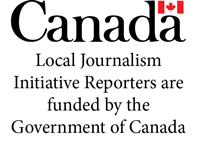TORONTO – Ontario’s top doctor Kieran Moore appeared on July 13 for his first scheduled public COVID-19 briefing since April to announce expanded fourth dose COVID-19 vaccine eligibility.
As of July 14, anyone between 18 and 59 years of age can get a second booster, or fourth dose, of a COVID-19 vaccine.
Moore explained to reporters that the decision to expand eligibility, in advance of an anticipated fall or winter arrival of an updated vaccine, was made in the interest of protecting those with underlying illnesses until then.
Immunosuppressed individuals already have access to five total doses.
“This dose is really for those that are vulnerable to this virus,” Moore said, pleading to anyone with an underlying illness to “please consider coming forward as soon as possible.”
A combined, or “bivalent vaccine,” containing an updated recipe with a yet-to-be determined subtype of omicron is anticipated to arrive in fall or winter, depending on factors such as what subtype is included and how quickly the vaccine can be manufactured.
In the United States, the Food and Drug Administration has requested vaccines be developed with BA.4 and BA.5 omicron spike proteins.
For the general population who are healthy, three doses will be “very good,” Moore said, for the next several months.
“If you’re young, [with] no underlying medical illness, have had [three doses], I think it’s fine to wait … because your risk of hospitalization and severe outcomes, at a population level, is very, very low,” Moore explained, encouraging individual discussions with primary care providers.
Before you can get a fourth dose, five months will need to have elapsed since your most recent dose, or three months since a COVID infection.
Moore emphasized getting a fourth dose in July should not interfere with eligibility for a fall or winter dose of a bivalent vaccine.
According to the doctor, Ontarians are now experiencing the seventh wave of the virus, driven by a subvariant of Omicron, known as BA.5 — the dominant variant in the province.
Moore called BA.5 “more transmissible” than past variants, alluding to increasing wastewater signal and hospitalization data.
But Moore expects this wave will be less severe, more manageable and have a “slower trajectory” – one expected to crescendo within the next two weeks.
The doctor credits vaccinations, antiviral drugs Paxlovid and Remdesivir, and the Evusheld prophylaxis, for equipping health professionals with “the tools to manage” the seventh wave.
Moore stated “many Ontarians have yet to heed the call” for booster shots.
Five million haven’t gotten a first booster, or third dose, followed by over 1.6 million Ontarians – “at their highest risk for severe outcomes” – who are without a second booster, or fourth dose, he said.
Moore also reiterated well-worn statements of the prolonged protection vaccinations provide against severe disease and outcomes resulting from COVID infections and encouraged ongoing vaccination.
He recommended visits be made outdoors, that those even mildly sick stay home, and advocated for the continuation of good hand hygiene, cough etiquette and the like.
Though masking is discretionary, Moore is encouraging people to mask up when indoors, and expect to wear one when in congregate or long-term care settings.
A return to enforced masking could be recommended to the provincial government in the fall should health system capacity become “threatened,” Moore said.
As of July 7, according to provincial hospital data, there were 712 people with COVID-19 who were hospitalized across the province, and 104 COVID-positive individuals admitted to ICUs.
Rapid antigen tests continue to be provided by the province to places such as groceries stores, where they can be accessed without charge.
The tests, Moore said on Wednesday, are around 50 to 60 per cent accurate at detecting omicron variants. Because of the window-of-error, he recommends at least two negative tests to indicate less likelihood of an infection. One negative test should not be relied on.




